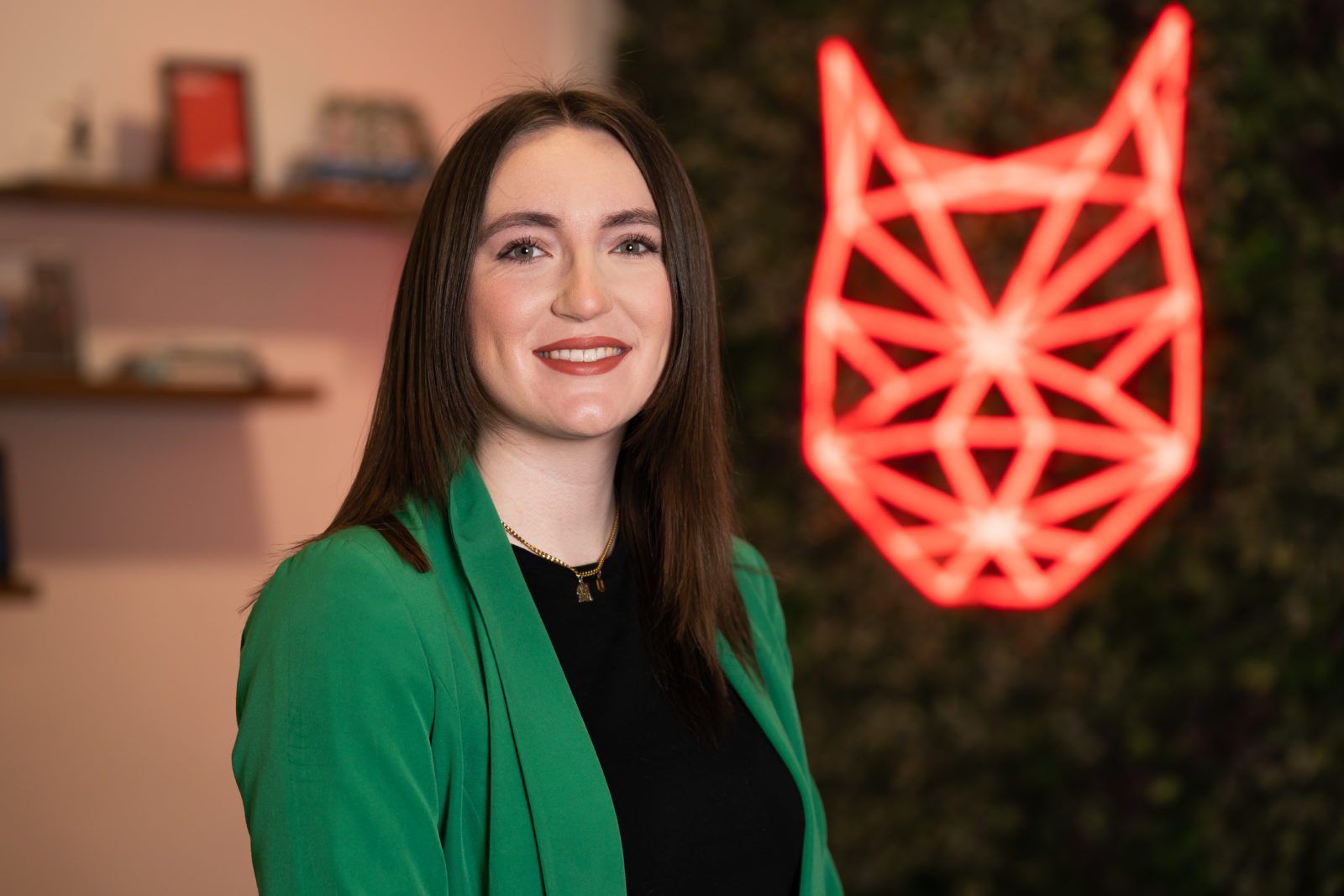The way we create and optimise content has shifted dramatically in 2025. With AI-driven search engines becoming more and more mainstream, simply ranking for keywords is no longer enough. According to a 2025 study by Ahrefs, AI Overviews now appear on 21% of all keywords and 57.9% of all question queries.
Today, large language models (LLMs) evaluate content based on clarity, structure and extractability, alongside brand credibility and relevance. So, how can we create content in a format that appeals to LLMs as well as humans?
Content optimised for LLMs should have:
In the age of LLM-driven search, content creators should avoid:
In the rest of this blog, we’ll explore the content formats LLMs prefer, why structure matters, and practical strategies for repurposing existing content so your site becomes more visible in AI-driven results. Plus, we’ll provide you with a practical checklist so you can ensure every piece of content you create hits the mark with LLMs.
Jump to section:
When creating content for AI-driven search and large language models (LLMs), the way information is structured is just as important as what it says. LLMs don’t simply read content like humans do – they process information in ‘tokens’ and knowledge chunks, identifying discrete units of meaning that can be referenced, summarised or cited.
Well-formatted content helps LLMs quickly:
Poorly structured content, with long unbroken paragraphs, inconsistent headings or vague definitions, makes it difficult for LLMs to parse, increasing the chance your page will be ignored or misrepresented in AI summaries.
LLMs excel at parsing clear, modular, and semantically organised content. They prioritise concise answers, structured headings, lists, step-by-step instructions, and clearly defined terms.
In this section, we explore the content formats that LLMs prefer, including:
We explain exactly why these formats improve LLM comprehension and increase your chance of being cited in AI tools and AI overviews. Each strategy is paired with a practical example, so you can see how to structure your content to maximise visibility and credibility in AI-driven search results.

Structure your content around clear, concise questions and direct answers.
Begin each section with a user-focused question, then follow immediately with a short, precise answer. After that, you can expand with context, examples or supporting data. This mirrors the tokenisation process of LLMs, allowing them to easily isolate and extract discrete knowledge chunks.
OpenAI’s GPT models (and similar LLMs) are fine-tuned on datasets like Natural Questions (Google) and SQuAD (Stanford Question Answering Dataset), which are both built around question-answer pairs. This training makes them exceptionally proficient at interpreting and generating responses based on explicit Q&A pairs, leading to better content comprehension and higher citation rates.
| Practice | Detail | LLM Benefit |
|---|---|---|
| Concise Answers | Aim for one to three sentences (approx. 40–60 words) for the initial direct answer. | Maximises the likelihood of direct snippet extraction and in-line citation by the LLM. |
| Heading Consistency | Use H2 or H3 tags for every question to create a clean, predictable content hierarchy. | Improves overall crawlability and helps search engines and LLMs segment key topics. |
| Question Variation | Include variations of the core topic using how, what, why, when, or is/are questions. | Broadens the scope of topics your page can rank for in traditional search and AI queries. |
| Schema Markup | Implement FAQPage structured data using JSON-L (see Google Structured Data Guide). | Explicitly signals Q&A content to search engines, often leading to rich results and enhanced AI understanding. |
| Supporting Evidence | Elaborate after the initial answer with data, quotes, or context. | Adds topical authority and depth, which LLMs use to weigh the reliability of the extracted answer. |
| Internal Linking | Link questions to relevant internal pages or glossary definitions. | Provides contextual relevance for both human users and AI crawlers. |
| Regular Updates | Keep content fresh and accurate. | Freshness is a factor LLMs often consider when determining which sources to cite. |
Question: How can I optimise my content for AI-driven search?
Answer: Structure each section around clear questions and direct answers, use bullet points for lists and apply FAQPage schema markup to make content easily extractable by LLMs.
Expanded context: This format ensures AI systems can quickly parse your content, lift discrete answers for summaries and cite your page in response to user queries. According to a July 2025 study by Relixir, which analysed 50 sites, pages with FAQPage schema achieved a post‑Gemini 2.0 citation rate of 41% vs 15% for pages without schema – roughly 2.7 times higher. It also improves human readability, creating a double benefit for SEO and AI visibility.
Add a concise FAQ section at the bottom of your page. Position FAQs after the main content, ideally just below your main call-to-action.
FAQs help both users and LLMs quickly locate additional, intent-based information. These sections capture related long-tail queries that don’t fit naturally within the main narrative. Each FAQ should address a distinct user intent (e.g. clarification, comparison or next steps) in one to three sentences.
FAQs provide information in a highly structured format that aligns closely with how LLMs extract and summarise information. By clearly labelling questions and answers using FAQPage structured data, you explicitly flag your content as a source of authoritative, concise answers.
Google, Bing, and AI-powered systems like Perplexity or ChatGPT’s browsing models often pull these sections into their own summaries or citation layers – meaning well-structured FAQs can directly appear in AI results.
| Practice | Detail | LLM Benefit |
|---|---|---|
| Placement | Add FAQs at the bottom of the page after your core content or guide. | Reinforces topical expertise and improves perceived authority. |
| Structured Data | Use JSON-LD FAQPage schema markup to define each Q&A pair. | Makes content machine-readable and optimised for snippet extraction. |
| Distinct Questions | Avoid repeating questions already covered in the main body. Focus on clarifications, common objections, or related queries. | Expands semantic coverage and captures adjacent intents. |
| Concise Answers | Limit answers to around 50–70 words; link to supporting internal content for depth. | Enables fast extraction while preserving context relevance. |
| Natural Language | Phrase questions the way users search (e.g. “Can I…?”, “Do I need…?”, “Where can I…?”). | Increases match rate with conversational queries in AI systems. |
FAQ H2: LLM-Friendly Content Format FAQs
FAQ H3: Do FAQs Help Make Content More LLM-Friendly?
FAQ Answer: Yes. Adding a structured FAQ section improves clarity, reinforces key topics, and helps large language models identify and extract precise answers. When combined with FAQPage schema markup, it increases your chances of being cited or summarised in AI-driven search results.
Structured Data Markup:
<script type=”application/ld+json”>
{
“@context”: “https://schema.org”,
“@type”: “FAQPage”,
“mainEntity”: [
{
“@type”: “Question”,
“name”: “Do FAQs Help Make Content More LLM-Friendly?”,
“acceptedAnswer”: {
“@type”: “Answer”,
“text”: “Yes. Adding a structured FAQ section improves clarity, reinforces key topics, and helps large language models identify and extract precise answers. When combined with FAQPage schema markup, it increases your chances of being cited or summarised in AI-driven search results.”
}
}
]
}
</script>
Learn more about how FAQs and FAQ Schema can make a difference in SEO more widely in our blog, ‘Are FAQs and FAQ Schema good for SEO?’.
Create a dedicated glossary page or section that defines key industry or technical terms. Each entry should use the term as a heading (e.g. H3) followed by a short, clear definition, and a link to additional content.
LLMs build their knowledge graphs around entities and their definitions. Glossaries provide clean definitions which models can lift and cite. They also help search engines better understand topical context, increasing your chances of being featured in AI-driven summaries
A well-structured glossary also improves user experience, especially for complex or niche topics, while strengthening your site’s semantic network and internal linking.
| Practice | Detail | LLM Benefit |
|---|---|---|
| One Term per Heading | Use a separate heading for each defined term. | Makes definitions easily identifiable and extractable. |
| Concise Definitions First | Start with a 20–30 word definition, then expand. | Creates clear, high-signal text for AI citation. |
| Cross-Link Terms | Use “See also” links to related glossary terms. | Builds internal semantic relationships between concepts. |
| Add Contextual Links | Link to relevant blog posts or service pages. | Helps LLMs map topic connections across your site. |
| Consistent Formatting | Keep a uniform term-definition structure. | Improves crawlability and coherence. |
| Use DefinedTerm Schema | Add DefinedTerm structured data. | Enhances AI comprehension of term relationships. |
Term: Generative Engine Optimisation (GEO)
Definition: GEO is the practice of structuring content and metadata to maximise visibility in AI-driven search and answer engines. Unlike traditional SEO, which focuses on ranking in SERPs [Link to SERP Glossary Entry], GEO aims to make content easily extractable, trustworthy and cite-worthy for LLMs. It prioritises clarity, structured formatting and topical authority.
DefinedTerm Schema:
<script type=”application/ld+json”>
{
“@context”: “https://schema.org”,
“@type”: “DefinedTerm”,
“name”: “Generative Engine Optimisation (GEO)”,
“description”: “The practice of structuring content and metadata to maximise visibility in AI-driven search and answer engines.”,
“inDefinedTermSet”: “https://www.example.com/glossary”
}
</script>

Frame content as a question (“How to…?”) or a process, then provide numbered steps or bullets. This format aligns with how LLMs look for procedural answers and simplifies extraction.
LLMs are optimised to identify instructional sequences (“how to”, “step 1”, “next”, “finally”) when helping users complete tasks. This means they prefer highly structured content with clear headings and numbered steps. Their goal is to help people solve their problems by providing answers to their questions. Step-by-step guides help align your content with this goal and provide them with information that’s easy to understand and quick to parse.
| Practice | Detail | LLM Benefit |
|---|---|---|
| Question-Led Headings | Use “How to…” or “How do I…” phrasing. | Matches common AI and search intent queries. |
| Direct Summary First | Provide a 1–3 sentence summary before the steps. | Gives AI systems a high-signal answer to extract. |
| Numbered Steps | Use a Step 1, Step 2 format. | Improves clarity and sequential comprehension. |
| Subheadings for Each Step | Add clear labels under each step. | Helps AI isolate and summarise actions. |
| Add HowTo Schema | Implement HowTo structured data. | Increases visibility in rich results and AI tutorials. |
Heading: How to Optimise Content for AI SearchShort direct answer: Structure your content with clear headings, concise answers, and modular sections so that LLMs can easily extract and cite your information.
Numbered steps:
Step 1: Start With a User-Focused Question
Use a specific, intent-based heading such as “How do I create content optimised for AI search?”
Step 2: Provide a Short, Direct Answer
Include a concise explanation before adding detail.
Step 3: Expand With Supporting Details
Add context, data or examples to strengthen credibility and extractability.
Use numbered or bullet‑list formats under a clear, user-focused heading. For example, “Top 5 Ways to…” or “What Are the Best Content Formats For LLMs?”.
LLMs excel at parsing modular content. Each bullet or numbered item acts as a separate “knowledge chunk,” allowing AI systems to lift individual points for answers or summaries. Structured lists are easier to scan for relevance than paragraphs of unstructured text, increasing the likelihood of citation in AI-driven results.
| Practice | Detail | LLM Benefit |
|---|---|---|
| Question or Number-Based Title | e.g. “What Are the Key Content Formats for LLM Visibility?” | Aligns with AI query phrasing. |
| Short Intro Answer | 1–3 sentences summarising the list’s purpose. | Provides an extractable preface. |
| Consistent Structure | Present each list item as a numbered H2, followed by up to 100 words of explanation, keeping it as concise as possible. | Increases modular clarity. |
| Internal Links | Link each point to a related guide or glossary term. | Strengthens internal network for AI mapping. |
Heading: What are the key content formats for AI visibility?
Short direct answer: Use clear, structured lists to present multiple points so LLMs can easily extract each item. Lists break content into discrete, modular chunks that AI systems can lift for summaries, increasing your chances of being cited in AI-driven responses.
List:
H2: 1. FAQs
Present concise question–answer pairs to help LLMs extract defined knowledge chunks.
H2: 2. Glossaries
Create clear term definitions that LLMs can lift for context.
H2: 3. How-To Guides
Structure content in logical, numbered steps for procedural clarity.
Include a short summary (“TL;DR”) at the beginning of a section or page that answers the core question in one or two sentences. This gives the LLM a high‑signal chunk right at the top that summarises the main topic of the page.
LLMs often prioritise the first few sentences or summaries when determining relevance. Providing a concise summary helps the model quickly locate the key point and decide to cite it.
| Practice | Detail | LLM Benefit |
|---|---|---|
| Use Bold Label | “TL;DR” or “In Short” to signal the summary. | Improves pattern recognition. |
| Keep It Under 40 Words | Focus on the core insight. | Creates a concise, high-signal snippet. |
| Follow With Supporting Details | Expand with evidence or examples below. | Reinforces trustworthiness. |
| Use Bullet Highlights | Add optional key takeaways. | Makes content easier to scan for AI and humans. |
TL;DR: LLMs favour structured, modular content. Start with concise summaries, use clear headings and break information into logical sections to maximise extractability and citation potential.
Use the heading to pose a question (“What happened when X company restructured their content?”). Then provide a brief answer/insight, followed by a detailed breakdown (problem → action → result). Real‑world evidence gives LLMs concrete data to use.
LLMs favour evidence‑rich content with outcomes and metrics. Case studies provide structured “challenge → solution → outcome” sequences, which align with how models interpret success scenarios. LLMs prefer data-backed, evidence-rich content that demonstrates real-world outcomes. Structured case studies align with this by presenting measurable, fact-based results that provide strong E-E-A-T signals.
| Practice | Detail | LLM Benefit |
|---|---|---|
| Pose as a Question | e.g. “What Happened When Brand X Adopted an AI Content Strategy?” | Increases engagement and relevance. |
| Add Key Outcome Summary | Provide the main insight upfront. | Creates a high-signal extractable snippet. |
| Use Clear Subsections | Background → Action → Result → Lessons. | Matches LLM preference for structured narratives. |
| Include Specific Metrics & Quotes | Use real data where possible and be specific with your data. | Adds credibility and specificity. |
Heading: How PlumLife Used FAQs, Guides and Affordability Tools to Improve Organic Performance and LLM Mentions
Key Outcome: Plumlife saw a 69% year-on-year increase in new users from organic channels and an increase in mentions from AI Overviews and LLM platforms, by creating high-quality GEO and SEO content that directly addressed first-time buyer challenges.
Breakdown:
Background: Plumlife struggled to compete with national property giants like Zoopla and Rightmove in search results and LLM mentions.
Action: We created relevant, high-quality content in highly modular formats (e.g FAQs).
Result: Organic traffic increased by 69% Year-on-Year, and Search Console Clicks increased from 24.6K to 42.6K in just three months.
Lesson: Creating valuable content in formats that are easy to read for users and easy to parse for LLMs is key to increasing relevant site traffic.
Link:Learn more about how Wildcat Digital helped Plumlife get ahead.
Present your data, survey, or study as a question-led insight (“What our 2025 study found about LLM-optimised content”) followed by a clear summary of your findings.
LLMs seek authoritative, primary sources for factual grounding. Publishing your own research gives your brand unique authority, making your pages a preferred source for AI summarisation and citation.
| Practice | Detail | LLM Benefit |
|---|---|---|
| Start With a Clear Research Question | e.g. “What Did Our 2025 Survey Reveal About AI Content Formats?” | Improves topical precision. |
| Summarise Key Insight First | Present headline findings in 1–3 sentences. | Offers a concise, extractable data point. |
| Outline Methodology | Include sample size, timeline and data source. | Builds transparency and credibility. |
| Visualise Findings | Use tables or charts. | Makes quantitative data easier for models to interpret. |
| Cite or Link to Dataset | Offer a downloadable source if possible. | Signals transparency and authority. |

You don’t always need to start from scratch to create content that performs well in AI-driven search. One of the fastest ways to increase visibility and citation potential is by repurposing existing content into formats that LLMs prefer.
Optimising content for LLMs adds another layer of complexity to the already complex world of SEO. At Wildcat Digital, we are actively integrating GEO into our existing tried and tested SEO strategies to ensure our clients continue to outperform their competitors.
Get in touch with our team today to learn more about how we can help your business succeed in the new era of LLM-driven search.

Founder
Our founder, Will Hitchmough, worked at a number of high profile Sheffield Digital Agencies before founding Wildcat Digital in 2018. He brings an extensive knowledge of all things related to SEO, PPC and Paid Social, as well as an expert knowledge of digital strategy.
Digital Marketing can be a minefield for many businesses, with many agencies ready to take your money without knowing how to deliver results. I founded Wildcat Digital to deliver digital success to businesses with smaller budgets in a transparent way.

Head of Growth
Rich joined us in May 2024 to head up our growth team. With years of experience helping other agencies to grow, Rich joins us at an exciting time as Wildcat is working on a five-year plan to become one of the biggest agencies in the UK.
Outside of work, Rich is a father to three children, which keeps him very busy! He’s also recently started running again to keep fit and loves a bit of DIY.

Head of Digital
Sarah joined Wildcat in January 2025, bringing over seven years of SEO expertise to the team. With a background in Fashion Communication and Promotion, she has worked both in-house and at agencies, covering a range of digital marketing specialisms before focusing on SEO.
Passionate about all things search, Sarah thrives on helping brands grow their online presence.
Outside of work, she enjoys walking her dog, running, and shopping for vintage clothing.

Office Manager
Amelia joined Wildcat Digital in January 2025, bringing extensive experience in HR, Health & Safety, Facilities Management and IT Support. Previously an Operations Manager at The University of Sheffield, she has a strong background in creating efficient and well-organized work environments.
Specialising in HR, Health & Safety, and Facilities Management, Amelia ensures the Wildcat Digital team has the resources and support needed to thrive. Whether managing office operations, maintaining compliance, or fostering a positive workplace culture, she keeps everything running smoothly.
Outside of work, Amelia loves trying new things, traveling, camping, and walking. She also enjoys socialising and exploring new places with friends and family. Her adventurous spirit and proactive approach make her a valued member of the team.

Client Success Coordinator
Siena joined us in 2023 with a background in sales and digital marketing. She leads on client relationships across the company, ensuring that our customers are happy throughout their journey with us, from their initial consultation through to onboarding and beyond.
Outside of work, Siena enjoys travelling and getting stuck into the local culture. She likes to make the most of her experiences and particularly enjoys watching sunrises and sunsets from beautiful locations around the world.

SEO Account Director
Paul has a strong background in SEO, having previously founded and ran a successful eCommerce business, as well as running a personal blog that achieves an average of 17K users per month. Paul’s knowledge of SEO is extensive, with a strong emphasis on client handling and technical SEO.
Outside of work, Paul enjoys spending time with his family and staying active with weight lifting and combat sports.

Team Lead & Technical SEO Account Manager
With a degree in Computer Science and SEO experience dating back to 2017, Dariusz has a wide range of SEO skills and knowledge. His specialist knowledge of Technical SEO has firmly landed him the title of Wildcat’s Technical Wizard, and he has recently taken on the responsibility of Team Leader for the Panthers Team.
In his spare time, Dariusz loves hiking, experimenting and trying new coffees and loves learning new things. He is currently learning more about CRO and AI and how this could benefit our clients.

Team Lead & Senior SEO Account Manager
With a background in sales, Molly is a natural Account Manager, brilliantly handling any issues that come her way. Having joined us as a Digital Marketing Executive, and working part-time through her final year of University, Molly is a shining example of how hard work pays off. She is now an SEO Account Manager with a particular interest in Content and Client Management.
In her spare time, Molly loves to get out in nature, hiking and exploring the Peak District. She also loves cooking and likes to unwind with a bit of yoga.

PPC Team Leader
Libby joined Wildcat in 2021 as our first PPC hire. With a degree in Digital Media Production, a Master’s in Digital Media Management and previous experience in Social Media Management, Libby hit the ground running and has since climbed the ranks to Senior PPC Account Manager and has a particular interest in the eCommerce sector.
Outside of work, Libby likes gaming, and cooking and likes to keep active by lifting weights.

Senior SEO Account Manager
With a degree in Film and TV production, and a varied career history, Jamie made the move to marketing with a Masters degree in Digital Media Management. He has since worked in SEO at Agencies across Sheffield, before joining Wildcat and working his way up to SEO Account Manager. Jamie has a particular interest in backlinks and Digital PR and has recently gained a client a valuable backlink from Forbes!
In his spare time, Jamie is an avid foodie and loves trying new restaurants and cuisines. He also loves to travel and spent a year travelling to Australia after university.

SEO Account Manager
Jasmine joined Wildcat in 2022 with a strong background in SEO and Account Management. At the time, she was finishing up a Level 4 Apprenticeship in Digital Marketing from the Chartered Institute of Marketing, and has since worked her way up to SEO Account Manager. Jasmine excels at content writing and promotion, and particularly enjoys finding creative ways to join the dots on multi-channel campaigns.
In her spare time, Jasmine volunteers at a charity, helping combat loneliness & social isolation experienced by older neighbours. Outside of Wildcat, she owns a catering company, Savery Grazing, creating delicious grazing tables & platters for a range of events. She also loves skiing and exploring the Peak District.

Senior SEO Executive
After spending ten years managing businesses, restaurants, cafes and event spaces across Sheffield, Jon decided to change careers and joined Wildcat as an SEO Executive in 2022. He especially enjoys the client management side of the job, helping them to understand digital marketing and ways in which they can build their business’s presence online.
Outside of work, Jon likes to keep fit with running, badminton and football, and also loves music.

Senior SEO Executive
Andy joined Wildcat in 2023 after starting his digital marketing career in-house for a local Sheffield company. Since joining, he has developed a strong interest in Technical SEO and has strong skills in Account Management.
Outside of work, Andy loves music and plays in a couple of bands. He also enjoys rock climbing, cycling, photography and good food.

PPC Executive
Before joining Wildcat, Tom worked across different industries, building skills in sales and customer service. He later developed a passion for digital marketing whilst working on personal marketing projects and freelance ventures, and gained numerous certifications in PPC and Social Media.
Outside of work, Tom enjoys staying active by going to the gym and hiking. He also loves travelling and motorbiking.

Senior SEO Executive
Kezia joined us in July 2024 after completing a CIM Certificate in Digital Marketing and gaining experience in Content SEO at another Sheffield agency.
In her spare time, Kezia loves to get outdoors, bouldering, hiking and travelling.

Senior PPC Executive
Alex joined Wildcat Digital in December 2024 as a Senior PPC Executive, bringing a strong background in Paid Media, Paid Social, and Programmatic advertising. With a degree in Business & Marketing and Google Ads certifications, she has the expertise to craft high-performing campaigns that drive results.
Before joining Wildcat Digital, Alex worked at two leading agencies in Leeds, honing her skills across various digital advertising platforms. Her analytical mindset and strategic approach help businesses maximize their online presence and advertising budgets.
Outside of work, Alex enjoys spending time with her dog, Lola, and going on walks with her dog walking group. She’s also a keen footballer and loves playing five-a-side whenever she gets the chance. Her enthusiasm and team spirit make him a great addition to the Wildcat Digital team.

SEO Executive
Amy joined Wildcat in 2024 with a background in journalism, having worked as a News Editor and Editor-in-Chief at The Sheffield Tab. She is naturally interested in Content SEO and research, so will no doubt prove to be a content power-house.
In her spare time, Amy loves watching crime shows, listening to music and hanging out with her dog, Eddie!

SEO Executive
Reiss joined the Wildcat Digital team in July 2025, with a background in journalism and digital content, Reiss brings both creativity and technical know-how to the team.
After graduating with a Journalism Studies BA from the University of Sheffield, where he also served as Games Editor and Deputy Editor for the student-run newspaper – Reiss jumped straight into the world of climate tech communications.
Outside of work, Reiss loves crochet, swimming, playing guitar, and diving into both video and board games. He’s always up for picking up new skills and trying new things – which makes him a perfect fit for our team!

Content & Proposal Writer
Liv joined the WildcatDigital Team in June 2025, with a strong background in financial admin and client care, Olivia is taking an exciting step into the creative world – and we’re so glad she’s doing it with us!
She’s currently studying content creation through her apprenticeship with Wildcat, and already bringing fresh energy and creativity to the team.
Outside of work, Olivia runs her own BIAB nail business, loves reformer Pilates, long walks, and is a member of a competitive dance team.

November 27, 2025
By now, you’ve probably heard of the term Search Engine Optimisation (SEO), and maybe even know what it entails. But…

November 21, 2025
We’re nearly at the end of the year, how time flies! Let's dive into the last-minute changes the SEO landscape…

November 13, 2025
Knowing that your business is delivering the right services and support is key to a long-lasting relationship with your customers.…